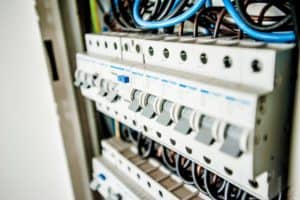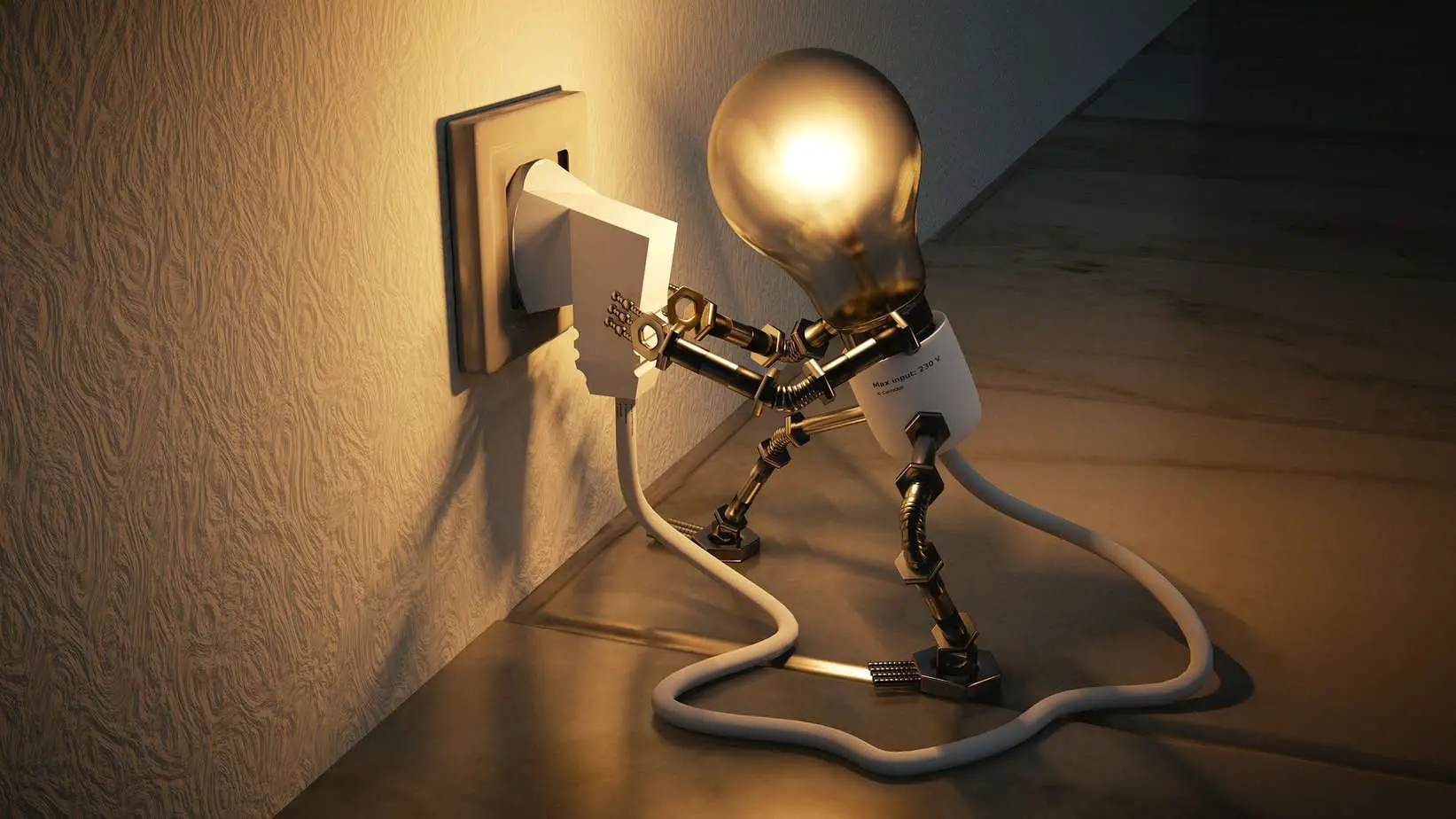As much as a garden office is revolutionary, it is nothing without electricity.
This is because most, if not all garden office designs come as pre-wired units. In lots of cases, garden office components are pre-manufactured and then put together on-site. Due to this pre-assembly process, all the necessary cables for light, heat, and power are included within the building structure, so when the building is on-site, the system will only need to be connected to the mains power supply, and then tested by a qualified electrician.
This structure is usually equipped with some of the most modern systems of communication, so that one can connect to anywhere and anyone around the world, from the comfort of the garden. This particular feature or advantage has allowed a lot of workers to perform their job roles from the comfort of their home either on a full-time basis or in some cases, for the majority of the week.

Having a close feel of nature is therapeutic to a lot of people, and there are many people out there who would give anything to have that feeling daily.
In most cases, it helps them function better, in others, it helps them relax, and that’s all that matters to them. If they could even work in such an environment, it would be heaven to them. Well, it is possible to work in an environment blossoming with that feeling of nature, and that is made possible by having a garden office in your home.
In recent times, there has been a rising trend in the design of a garden office, as it has now been made to include some added rooms, kitchen, toilet, and a shower room equipped with the right facilities. These have made garden offices truly self-contained units.
More so, this new trend not only increases the options for a growing business, but it also gives you a chance to expand, and if you decide to employ staff, that means they do not need to go to your main house to make use of essential facilities. This type of garden office creates a clear boundary between your home space and workspace.
Another flexibility that adding electricity offers is added facilities like toilet facilities, give more options to the concept of a garden office space for occupations like beauty therapists, dentists, and chiropractors. Here, they can have a waiting area and space for treatment just like a professional clinic.
How Do I Get Electricity In My Garden Office?
The procedure involved in getting electricity to your garden office is not a difficult one. With the right electrician, it would be an easy task to accomplish. In this part of this article, we’ll be showing you a step by step guide on how to get electricity to your garden office. Let’s begin!
-
Preparation
Every good project starts with proper preparation as it determines the success of the project. In the preparation process, you will determine the electrical equipment and material you will be using for the project; that is the number of lights, length of cable wires, and more. You will also have to figure out the best places you will have to put your light fittings and sockets.
More so, it is highly likely that the cables inside the shed will require a form of protection such as trunking, or conduit piping.
As part of the preparation, you should locate your fuse box, before getting an electrician because it might need upgrading or the technician might need to ask you some questions about it. Lastly, ensure that you know the distance from your main building, and the length of the fuse box from the outside wall of the house.
2. Hire an Electrician
The next step is to employ or hire a qualified electrician who can help you do all the necessary electrical connections. While this step might seem like something easy that you can do yourself, you must hire an electrical technician because faulty electrical wiring and connections can have serious effects such as electric shocks or fire hazards. These may ruin your fruitful enjoyment of your garden office.
3. Digging
Next, you will need to dig a trench between the house and the shed, however, before you start to dig, you should set out the channel using a rope. You can then use a spade to cut away the turf; keep it somewhere safe because it might take up to two weeks before you water it.
The length of the trench should be about 50 – 52cm deep such that it’s perfect to fit a cable.
If it’s a short trench, then you should use a drain spade, but if it’s a long trench, you might need to rent a trenching tool. How easy this step turns out to be is dependent on the type of soil and the rocks or tree roots that are in it.
Usually, the trench should be dug deep, under the vegetative debris. You might be surprised at the amount of space you need to retain in the soil; the sandier and the looser your soil is, the greater space you will need. However, soil that has lots of clay can be heaped higher than soil with lots of sand.
The cable should be buried about 500 – 700mm deep in the ground, and a hazard tape should be then buried above it, then fill the trench with enough stones before adding the dug up soil. The reason for doing this is that when anyone, for any reason, digs up that place, they will be warned that a cable is there through the stone and the hazard tape.
This step requires quite an amount of manpower if you decide to do it yourself, it is possible that you can, but you must talk to the electrician who will, in turn, give you the necessary information such as the ideal depth of the trench, and the place to dig it through.
If you contract it out, note that there are some firms or companies who might suggest that you pin the cable along a fence or wall instead of burying it as explained above. Although this might cut down the cost involved, it is in your best interest that you know that this is not the recommended method for getting electricity to your garden office.
4. The Electrical Wiring
After the digging comes perhaps, the most important part of the process – the wiring.
This is a very delicate process that requires the attention of a very skilled electrician, so ensure you employ one. In this step, after a proper route had been dug to the garden office, the electrician will then route the cable around the garden office and drill holes in the masonry work then cut each cable at other ends, and connect them to the fuse box, using the MCB.
You must have your office planned out as stated in Step 1, that is, decide where you want your sockets and other necessary electrical fixtures and fittings will be placed.
Moving on, the electrician will then fix your light and sockets based on your specification. The cable will be labeled using plastic tape which will issue a warning to people about a cable being laid below.
Also, make sure that the electrician gives you a certificate of work done. This is important because, if you want to sell your house, the certificate will prove that the work done has not breached any regulations.
5.Testing
This is the last step in getting electricity to your garden office.
In this step, after the wiring of the garden office, you should conduct a test to make sure the connection is perfect and that all electrical sources both in your house and the garden office work well.
After that, switch off the source, return outside, pour in half of the dug up soil back into the trench, then pat it down with a wooden post or the back of a spade, then use a hose to water the soil, but be careful to ensure you don’t overwater the soil, then add the other half of the soil and repeat.
Put the turf back on the trench and make sure you don’t leave any gaps between the pieces. Leave the land for about a week before you mow the lawn. When you are mowing the lawn, if you notice the grass dying, then you should consider planting fresh grass.
Now you are ready to move into your garden office.

How Much Does It Cost To Install Electricity To A Garden Office?
The cost of running electricity to your garden office might appear to be relatively high, however, you shouldn’t get discouraged by it because a lot of garden room construction companies do not send a qualified electrician to your home as part of the team to install the electric cables.
Rather, they ask you to hire a local electrician to perform the final connections after they have set up the necessary electrical process and installation on the building. While it is very easy to overlook the cost of connecting electricity, it is however a very important aspect of making your garden office functional and active.
Estimating the cost of installing electricity in your garden home from your house is difficult because the distance of both buildings affects the length and amount of cable required, and you might need a circuit breaker added to your fuse box depending on how it is to be set up. However, an estimated average cost will be between £1,000 and £1,500 (or its equivalent depending on your country).
